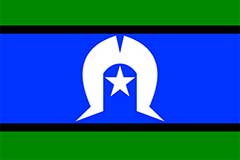Place is central in uncovering Aboriginal and Torres Strait Islander family history. Knowing where your ancestors lived, worked and travelled is essential for locating relevant records. It also provides clues that help you solve research puzzles.
Start with what you already know about where your family lived
Where were you born? Where did you grow up? Where did your parents meet? Were they married? If so, where? Where were they born and raised? What places do they mention when they are telling stories about their lives?
The most basic piece of information you need is the state or territory. You need to know this to request birth, death and marriage certificates, for example. But beyond this, knowing the state or territory will help you locate other records, particularly those created by state, territory and colonial governments in their administration of Aboriginal affairs.
Colonies, states and territories
Before 1901 Australia’s states were separate colonies, with their own governments, laws and policies. The colonies united at Federation and power was then shared between the new federal government and the state governments. The federal government was able to make laws about national matters, like defence, immigration and trade. The states (and later the territories) made other laws, including laws concerning Aboriginal people.
When you know where your family lived, you might also be able to get help from the relevant state and territory government Aboriginal family and community history unit.
Looking at the historical documents you find, keep an eye out for places. Take note of the town or suburb, and the street address if it’s given. These details can lead to other sources and other records. Some documents will have names of pastoral stations or other properties.
Find out where your ancestors moved
Did they move between towns and between colonies or states, particularly if they lived near a border? Indigenous Countries nearly always crossed European boundaries. People moved for lots of different reasons – for example, a woman might have moved to her husband’s home when she married, or a couple might have moved to find work, or they might have been moved onto a reserve, station or mission. People also travelled to participate in ceremony.
If your family did move through several states or territories, you will need to search for records and other traces of your ancestors in all of these places.
Explore the history of the places your ancestors lived
Learn as much as you can about the history of the places where your family lived. Was there an Aboriginal mission, reserve or station in the area? Were particular types of employment associated with the town? Was it a mining town or might your family members have worked on a pastoral property? Knowing this information can help you track down records.
Language groups and places
Learn as much as you can about the people and language groups that lived in the places where your ancestors lived. Local Land Councils will have extensive information about the people and language groups in that area. Native Title claims are also an excellent source of information.
The AIATSIS map of Aboriginal Australia may help you to identify the language groups associated with particular places. See: aiatsis.gov.au/explore/articles/aboriginal-australia-map
The AIATSIS Language Groups Thesaurus in Pathways is a comprehensive list of languages and people. See: www1.aiatsis.gov.au/index.asp
Create your own map
It can be very helpful to mark the places your ancestors lived on a map. This helps you see how far places were apart and think about how and why your ancestors moved around. You can use a printed map or one that’s online, like Google Maps. If you have trouble locating the places on a modern map, check the Geoscience Australia Place Names Search – it has the names of historical places. Local libraries often have historical maps, including maps of stations and properties.
Try to visit
If you can, visit the places where your ancestors lived. The local library, historical society or family history society might have useful information – they often have copies of cemetery records and photographs not available elsewhere, for example.
The local Aboriginal community organisation might be able to connect you with people who knew your family. You might also be able to track down the house your ancestors lived in, see the places they worked, and get a feel for what their local community was like.




